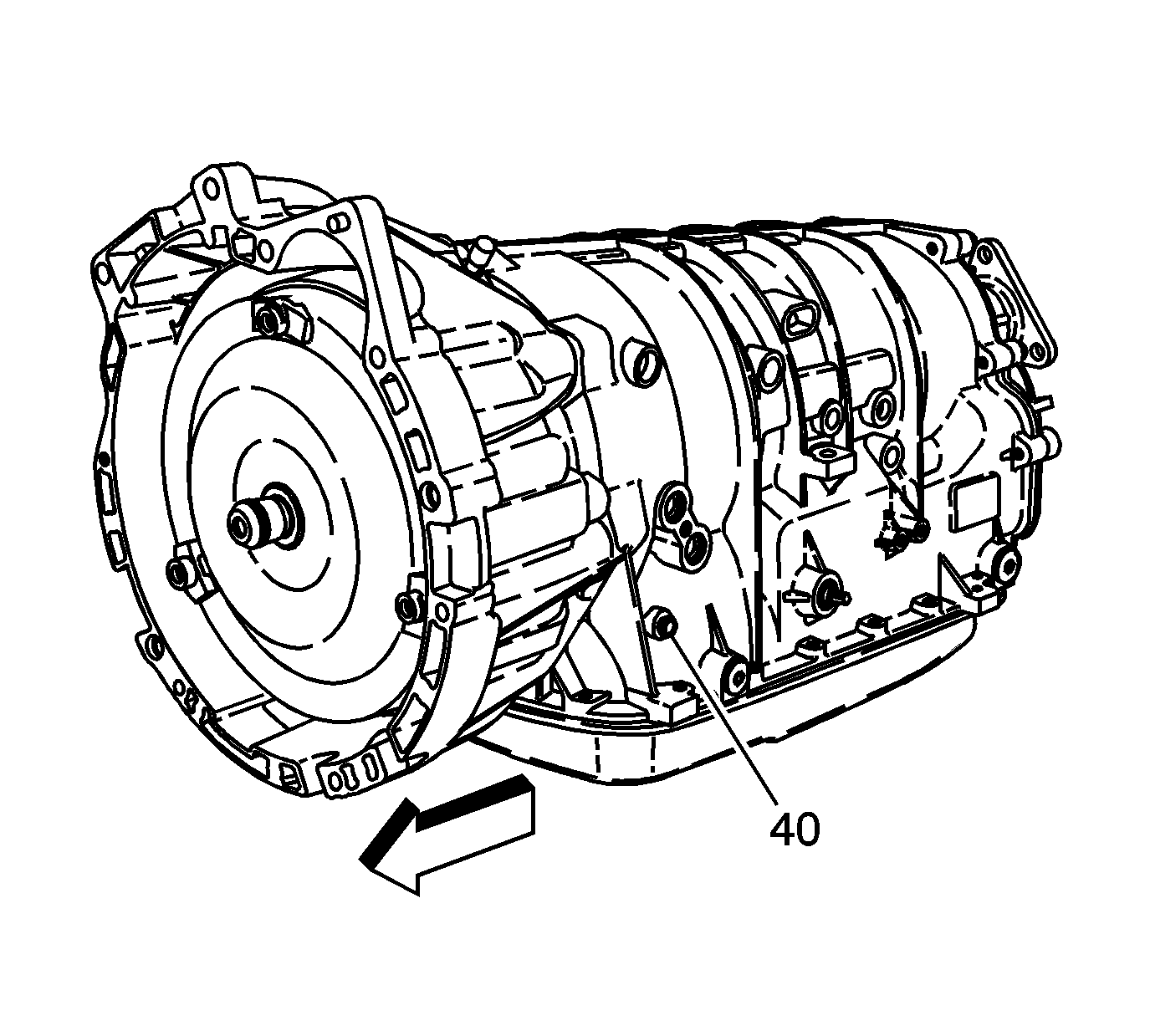Tools Required
| • | J 21867 Pressure Gage |
| • | J 21867-L40 Pressure Gage Adapter |
- Install a scan tool.
- Start the engine and set the parking brake.
- Inspect for a stored Diagnostic Trouble Code (DTC).
- Repair the vehicle, if necessary.
- Check the fluid level. Refer to the Transmission Fluid Check .
- Check the manual linkage for proper adjustment.
- Turn the engine Off. Remove the transmission pressure test plug (40) and install J 21867-L40 and J 21867 .
- Put the gear selector in PARK range and set the parking brake.
- Start the engine and allow the engine to warm up at idle.
- Access the PC solenoid valve control test on the scan tool.
- Increase the PC solenoid actual current from 0 to 1 amps in 0.1 amp increments. Allow the pressure to stabilize for 5 seconds after each pressure change. Read the corresponding line pressure on the J 21867 .
- Refer to the Line Pressure specification table. Compare the data to the table.
- If pressure readings differ greatly from the table, refer to Fluid Pressure High or Low .
- Turn engine OFF. Remove the J 21867 .
- Inspect the pressure test plug (40) and O-ring (66) for damage.
- Install the transmission pressure test plug (40).

Important: Before performing a line pressure check, verify that the pressure control (PC) solenoid valve is receiving the correct electrical signal from the PCM.
Caution: Keep the brakes applied at all times in order to prevent unexpected vehicle motion. Personal injury may result if the vehicle moves unexpectedly.
Caution: Do not allow the line pressure gage hose to come into contact with the exhaust system. Transmission fluid is flammable, contact with the exhaust system may cause bodily injury or vehicle damage.
Notice: The total test running time should not be longer than 2 minutes. Running the test longer than 2 minutes may damage the transaxle.
Notice: Refer to Fastener Notice in the Preface section.
Important: If the pressure test plug (40) and O-ring (66) are not damaged, they should be reused.
Tighten
Tighten the transmission pressure test plug to 11 N·m
(8 lb ft).
